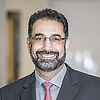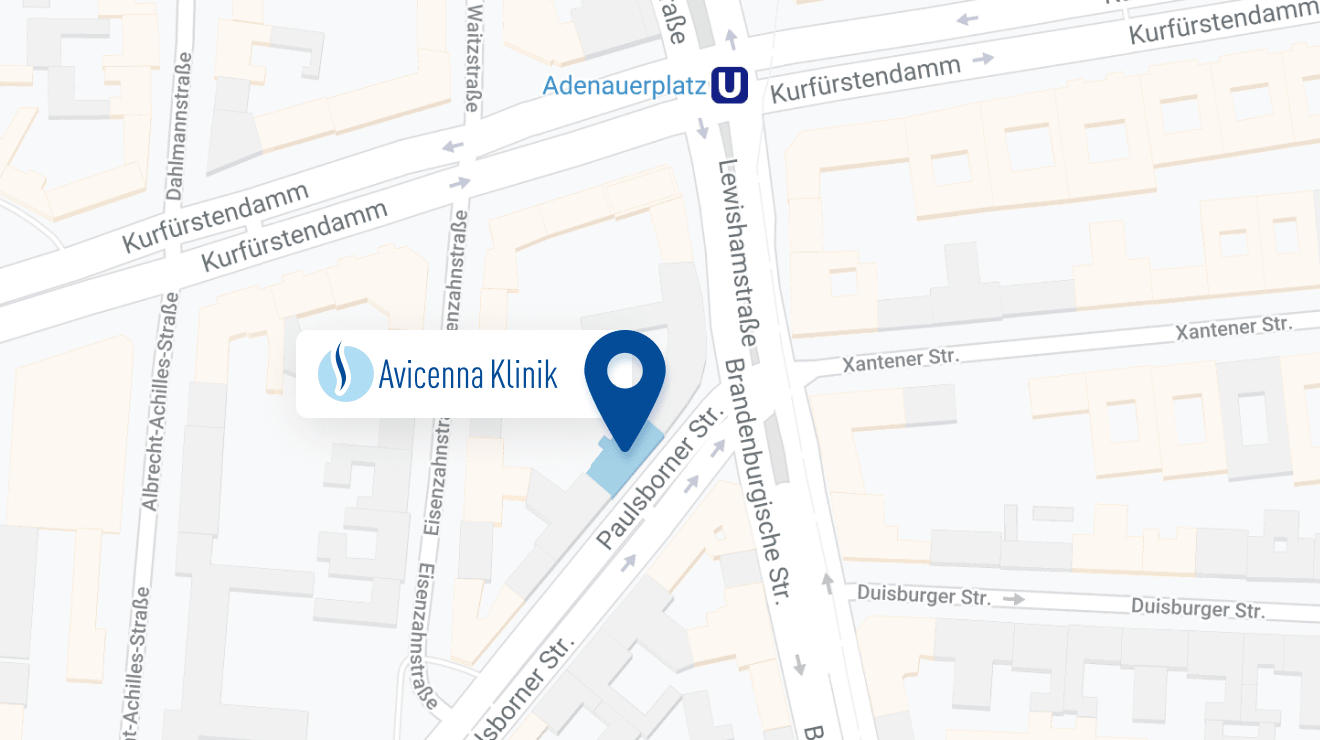What are spinal neurinomas and schwannomas?
Spinal neurinoma is a benign, slow-growing tumor in the spine. A neurinoma can occur in all sections of the peripheral nervous system and originates from their sheath cells (Schwann'schne cells). Schwann cells often serve as the namesake for neurinoma, which is readily referred to as Schwannoma. They can grow inside and outside the meninges (dura).
The distribution is clear: 70% of neurinomas develop inside the meninges, 20% outside. In the remaining 10% of cases, they exit the spinal canal in an hourglass shape with the peripheral nerves of the spinal cord through the neuroforamen. However, preferred sites of neurinoma are the cerebellopontine angle (acoustic neuroma) or the sensory nerve roots in the spinal cord (spinal neurinomas).
Spinal neurinomas establish particularly frequently in the upper and middle spinal segments (cervical and thoracic spine). Multiple neurinomas occur in neurofibromatosis. What is special about neurinoma is not the neurinoma itself, but the displacement and possible destruction of the surrounding tissue. The neurinoma is usually surrounded by a connective tissue capsule.
Frequency and distribution of neurinomas
Neurinomas represent 30% of all primary benign spinal tumors. In contrast to meningiomas, neurinomas occur with relatively equal frequency in both sexes. Thus, males and females are equally affected. They can also occur at any age: However, cases are most common between the 4th and 6th decades of life.
As mentioned, neurinomas are possible in different parts of the spine. The distribution is not uniform. In the thoracic spine, about 45% of all schwannomas are found. Another 30% of neurinomas are identified in the cervical spine, while the lumbosacral accounts for the remaining 25%.
Neurinoma symptoms
The neurinoma as such is not painful, however, it causes pain and other impairments due to the space occupying tumor. If the tumor is still small, there is usually no discomfort.
If the pressure from the neurinoma increases in the spinal canal, the pain becomes more severe. Larger neurinomas often pinch the nerve roots of the sensory nerves and displace adjacent nerves, causing health problems. The pain or sensory disturbances are not always in the same place. They are based on where the neurinoma is extending.
For example, if the neurinoma is located in the lumbar spine, it causes chronic back pain by compressing nerves near the spinal cord, which can radiate to the legs. Discomfort radiates into the arms if the neurinoma is located in the cervical spine. With tumors in the thoracic spine, there is radiation of pain into the chest. A neurinoma in the spinal canal can even lead to paraplegia.
Diagnosis neurinoma - in case of changes on the body, immediately to the doctor!
Very important: We must never confuse benign with good. Even benign tumors must be clarified by a specialist as quickly as possible so that serious consequences can be reduced as quickly as possible, ideally prevented.
Therefore, if you notice changes such as pain, swelling, small ulcers, on your body, you should place yourself in the trusting hands of a specialist. Not every pain in the spine indicates a tumor or schwannoma. But, if it is one that does, as it grows, progressive compression causes pain, numbness and weakness in the affected nerve roots, the same is true here: The sooner you are diagnosed and treated, the better your chances of success.
The first step in diagnosis is always the doctor-patient discussion (anamnesis). A thorough physical and neurological examination will determine whether the specialist will order a magnetic resonance imaging (MRI) or a computed tomography (CT) scan. With the help of contrast medium staining, it is possible to see where the tumor is located, how big it is. And after the appropriate classification, the doctor can decide what to recommend to the patient: to continue to observe the tumor or to intervene.
Therapy of spinal neurinomas
If the neurinoma is an incidental finding and does not yet cause any symptoms because it is very small, the benign tumor must be checked regularly by MRI (progress control). If an operation should be performed after all, it is realized microsurgically. The aim of this microsurgical procedure is to remove the neurinoma completely. In more than 90 percent of all cases, the complete removal of the tumor is successful. If complete resection of the neurinoma is not successful, tumor removal can be repeated. Rarely, this is followed by radiotherapy.
Neurinomas have a very good prognosis
Most of the patients are cured after the therapy of neurinomas and can go back to their profession. The neurinoma does not develop again after complete removal. After surgical intervention, rest and sparing are important. The patient should not expose himself to unnecessary stress after tumor removal.
Important: Take advantage of the offers of regular check-ups for preventive care. In case of unusual symptoms, you should immediately call the doctor to clarify them.
Information about the article
The article was last checked and updated on November, 10th, 2022.
About the author
Dr. med. Munther Sabarini, MD, is the director and founder of the Avicenna Clinic. As a specialist neurosurgeon, he particularly has expertise in the treatment of spinal disorders. Dr. Munther Sabarini has more than 30 years of professional experience. During this time he treated more than 30,000 patients.
Avicenna Clinic Content Quality Guidelines
All texts and content are written by medically trained, experienced experts in the field. Learn more about our content quality guidelines.
The Avicenna Clinic in Berlin is always willing to help you
Since the year 2001, the Avicenna Clinic is based in Berlin. Our doctors have at least 25 years of international experience in their respective fields (neurosurgery, spinal surgery, anesthesia, and orthopedics).
If you have severe back pain, a herniated disc or a suspected herniation, please contact us using the following information:




